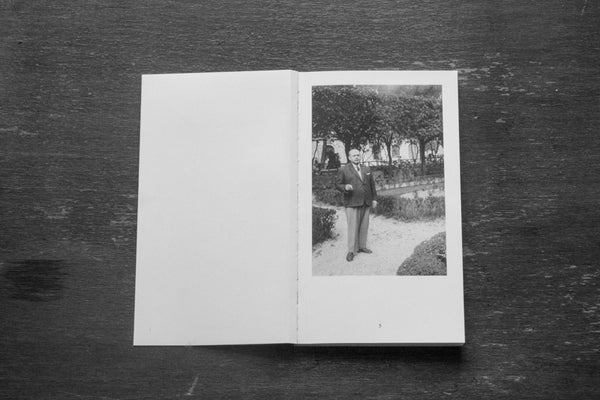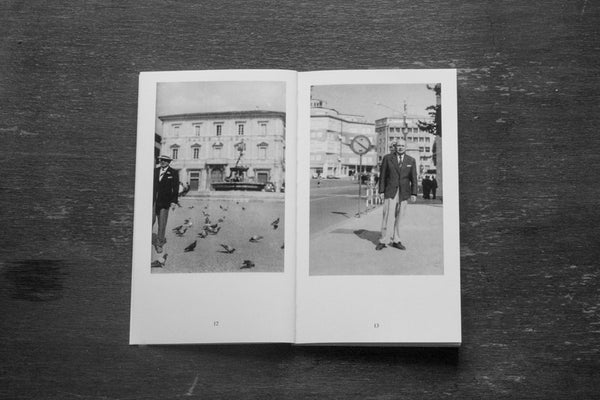



Massimiliano Tommaso Rezza
Un certo Salvatore M.
Pneumatica Editions — 2019
The book presents almost in its entirety a private archive of photographs of Salvatore M.’s widow. This man was an employee at the Minsitry of Home Affairs in Rome. Most of these family photos show the civil servant in individual portraits.The idea to make a book about this archive replies to the necessity to understand the relationship between social persona and private life, how photographic utterances are presented and how they are used in the portrait to construct the narrative of an autobiography. Exactly as happens in media communication, the photography of a private individual can be transformed into a manipulated and selective illustration. The portrait is subject to an intervention of shifting, from a possibly objective piece of data to an informed and studied one.Yet in the only two photographs in which our employee is portrayed next to the figure of his wife, his expression and posture markedly change, allowing another possible truth to emerge, a story that we can read from the observable data: Salvatore loses his self-assurance and gives us an unexpected and contradictory image of himself. We may ask ourselve, then, what Salvatore M.’s true nature is: is it the one we see in his individual portraits or the one in the two portraits of the couple?